It’s been featured in Elle Decoration, House & Garden and other home design magazines. It’s won awards for its steel construction and most recently was featured on Dezeen. Now we’ve got even more photos for you of both the exterior and interior of this unusual wood and steel tree house.
Paarman Family Estate Constantia Treehouse

Graham and Ina Paarman are the owners of Paarman Foods, ( a brand started in a garage.). In 2004 they purchased a Woodland estate in Cape Town with views of the Constantia mountains. The lavender-covered grounds have since been turned into a compound consisting of the main home (originally built in 1937 and restored), a main building (designed by Tiaan Meyer and Jan-Heyn Vorster of then Meyer + Vorster) that houses a test kitchen for product development, recipe testing and demo videos for their website, as well as a laboratory, office, library, corporate entertainment area and guest accommodation. Add to that an orchard, duck pond, gorgeous herb gardens and now, a treehouse.


The following text is taken from two different articles. One written by Graham Wood for New Zealand’s Wanted and one from Specifier:
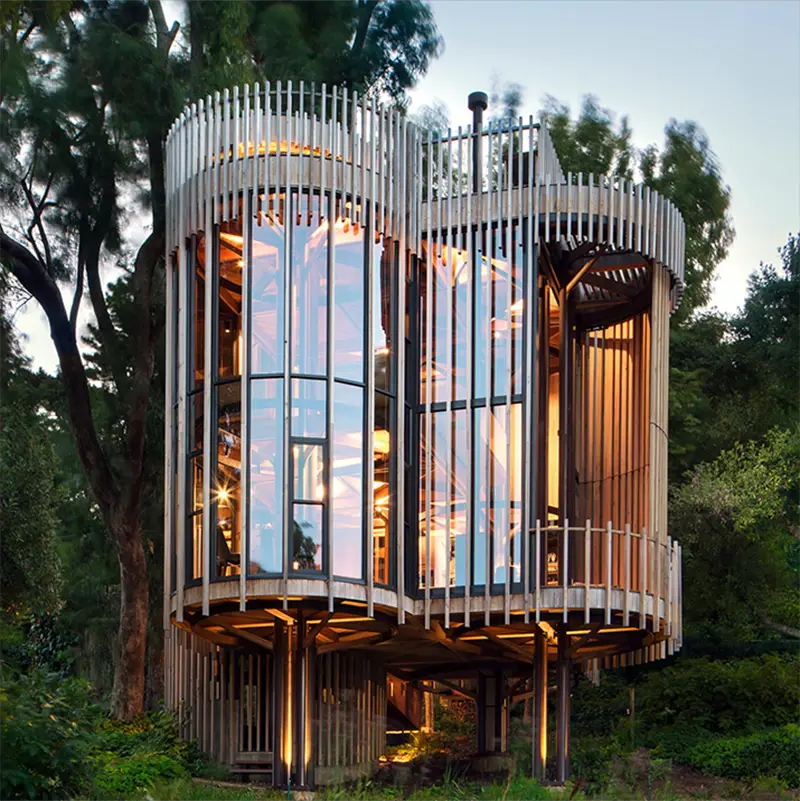
The Paarman Family Estate in Constantia, Cape Town, has spectacular views of the surrounding valley and mountains. It’s arranged along the lines of a modern interpretation of a “Cape Dutch Werf” or traditional Cape farmyard, with a manor house, a test-kitchen and a number of other buildings scattered among the extensive landscaped gardens.

For some time, businessman Graham Paarman had the idea that he’d like to add a one-bedroomed, tree-house hide-away to the estate’s dwellings. Malan Vorster Architecture Interior Design had worked on various buildings on the property over the years, so Paarman called on the firm to design his tree house.
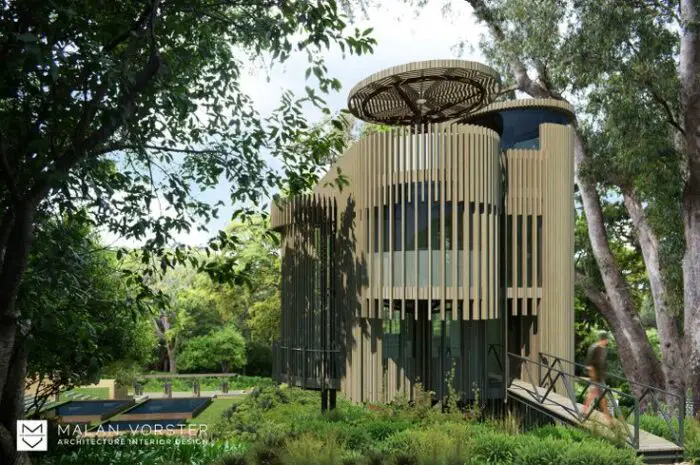
He wanted something small. “I never wanted a building that was going to impose itself,” he says. “I hoped it would blend in and enhance its surroundings, and would invite the outside in.” Paarman and the architects — Pieter Malan, Jan-Heyn Vorster, and Peter Urry — found the perfect spot in a wooded area overlooking a quartet of sharp-edged, square reflection ponds. The architects had been involved in designing the ponds with garden designer Mary Maurel.

This modern, cedar-clad cabin in the woods is raised on pillars so it appears to float above the ground; You enter the cabin via a suspended timber and steel ramp, which enhances the sense that the building is floating.


above: One enters the floating building by means of a weathering steel bridge with a timber deck walkway.
The lowest floor contains a living area and kitchen, with two double volumes and a circular stair linking the living area visually and physically to the bedroom level above. Large sliding doors, 6m high, open up the living level to a balcony overlooking the estate’s gardens.


The ponds seemed to bring a certain magic to the clearing, and their geometric shapes among the organic forms of the trees prompted Paarman and his architects to extend their intervention. Paarman says that unlike the ponds, he “didn’t want something symmetrical”.

Rather than an actual tree house, the architects envisioned a floating architectural interpretation of a forest. What began to form in their minds was an elevated building — one that seemed to levitate, so it felt as if it were among the branches of the canopy, but was actually more like a modern cabin in the woods.


above: The 4 large corten steel reflective ponds which mirror the trees by day and the stars by night were designed by Mary Maurel

A veil of vertical, slatted, western red cedar articulates the asymmetrical form that resulted. The striped pattern of the wood helps the cabin blend with its surroundings, so that it almost disappears in the landscape, but at the same time is a homage to nature.

Once inside, you feel as if you are aloft in the branches of a tree. The structure is essentially a glassed-in steel frame, and the varying densities of the cedar envelope provide views in some areas and privacy in others. The rooms are arranged vertically: one living space per floor.




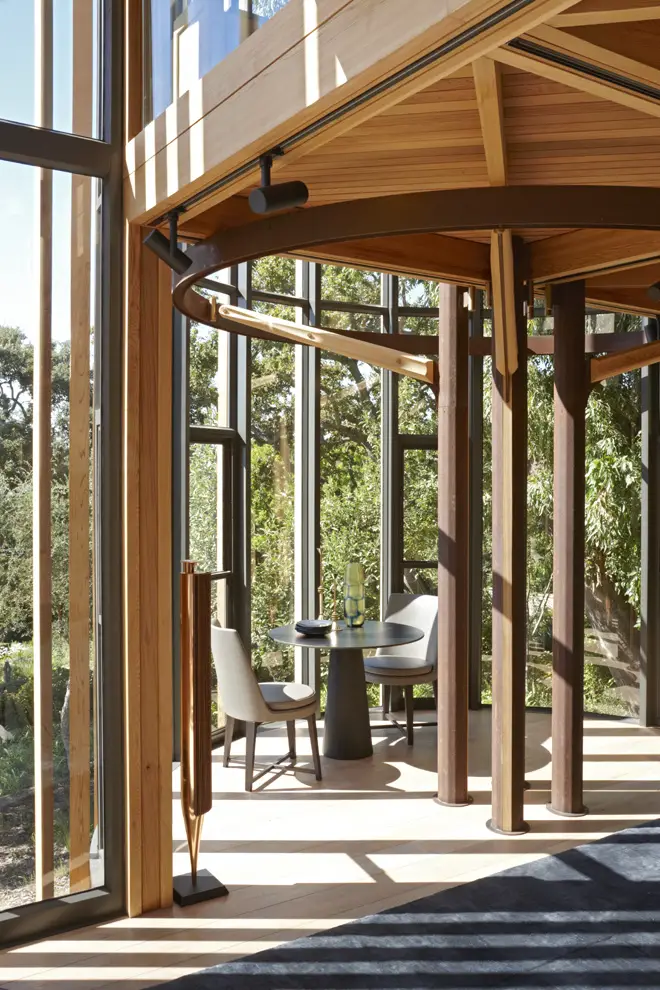
The living area is on the first level, the bedroom on the next, and at the top an open-air viewing platform and entertainment deck. The living area includes a kitchen and seating area.



above: The fireplace and seating area seen from the balcony above
Half-round bays projecting outward become a patio and a dining alcove, while on the bedroom level they accommodate a bathroom and the deck on the roof.
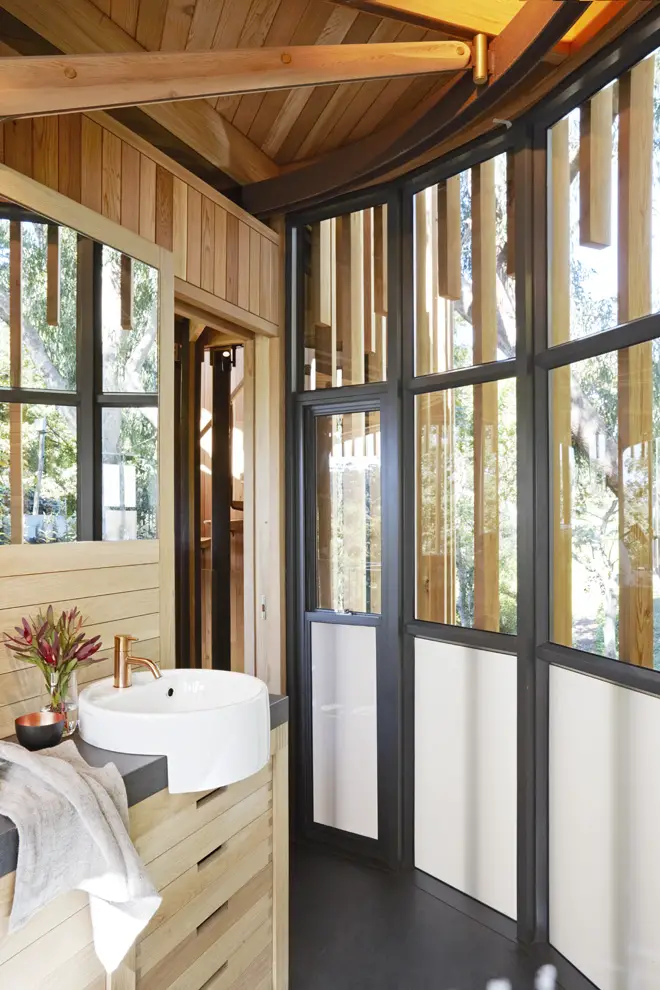



A double-volume space creates a vertical connection between the bedroom and living area. “There are tall sliding doors at the front that open up over both levels,” Malan says. Vorster points out how you feel at once embraced by the building and open to the “vastness of the landscape”. “You can see the fantastic night skies, and the squirrels in the trees,” Paarman says. “You can hear the birds from inside, too.”

The design concept was a series of abstracted trees. Steel pillars in groups of four represent tree trunks, and branch-like beams circumscribed by steel rings overhead support the floors above. This geometry of four circles is positioned around an imperceptible square at the centre of the design — a subliminal tribute to the refection ponds — resulting in “curves flowing from straight lines and rectangular shapes that become drums”, as Malan puts it, giving the cabin its form.


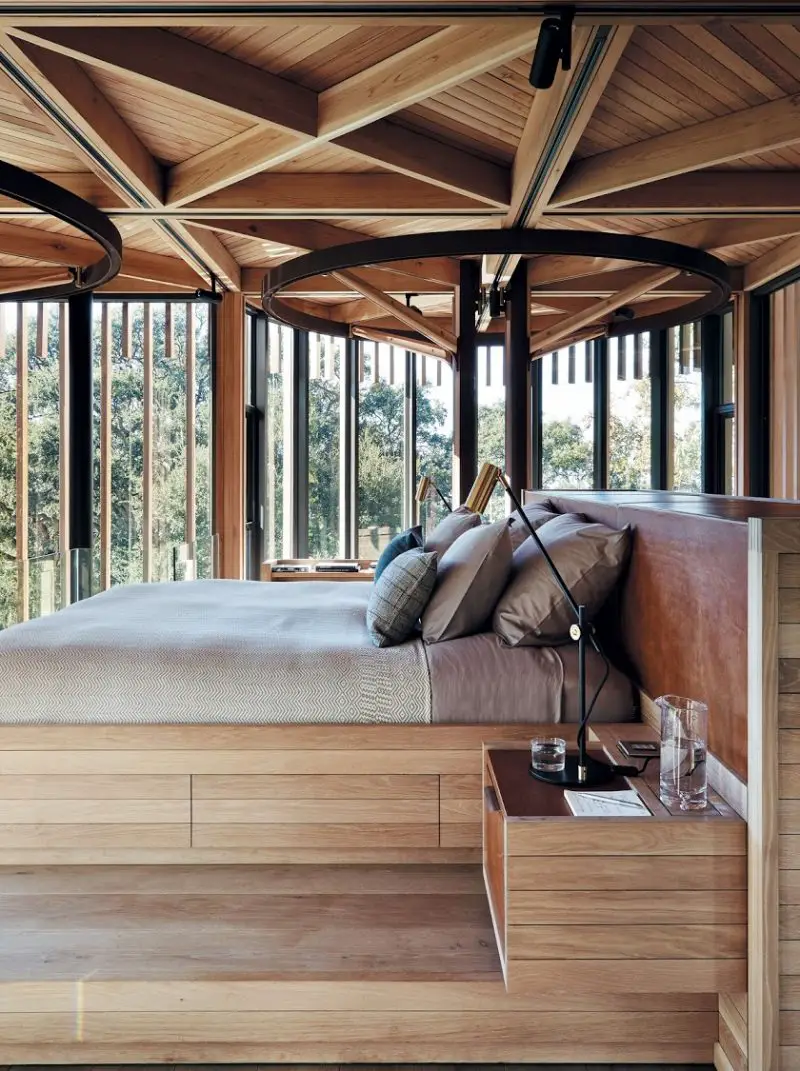
A cedar-clad drum contains the staircase, which is the only solid part of the building, contrasting with the light, veil-like transparency of the rest of it.

A circular staircase, with sculptural treads carved from solid standing laminated oak, and supported on weathering steel reaches, lead up to the bedroom level (with bathroom), and then further up to a roof deck with views over the Constantia Valley.

The architects consider the staircase one of their major achievements. “It’s so crafted and sculptural and it changes with the light,” Malan says. “You get different shadows at different times of the day.” Ascending the stairs feels a little like climbing a tree.

The small size of the cabin meant that minute attention to detail was possible in every aspect of the design.
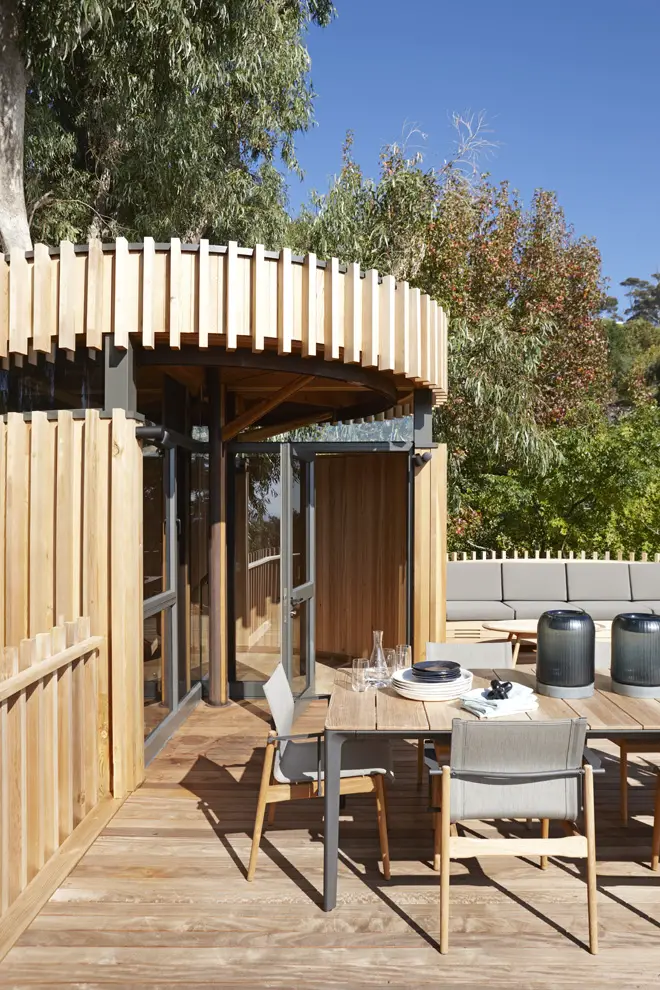
Project team
Client / Owner / Developer: Graham Paarman
Architect and Nominator: Malan Vorster Architecture Interior Design
Structural Engineer: Henry Fagan & Vennote
Quantity Surveyor: DA Quantity Surveyors
Main Contractor: T. Naude
Steelwork Contractor: Link Engineering
Photographers: Micky Hoyle, Condé Nast House & Garden; Greg Cox, Wanted Online
Garden and Ponds design: Mary Maurel
(sources: Malan Voster, Wanted Online NZ, Specifile, Dezeen, House & Garden NZ and Visi )
photos courtesy of Micky Hoyle, Condé Nast House & Garden; Greg Cox, Wanted Online; Malan Vorster Architecture Interior Design; and Dezeen
